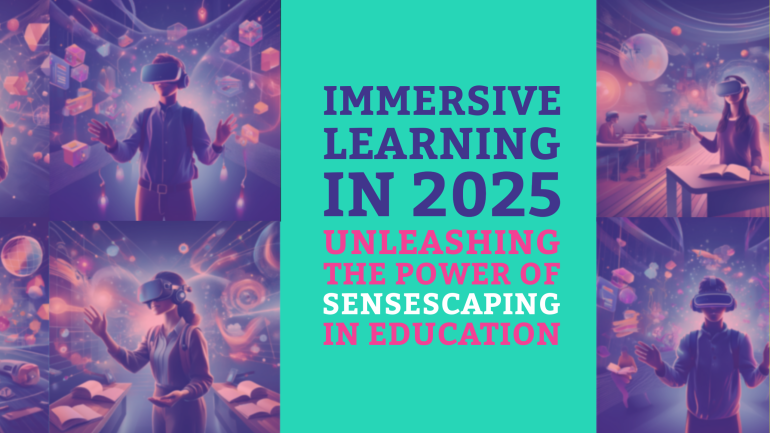Table of Contents
TL;DR: Transforming Academia: The Pivotal Role of Digital Communication in Modern Education
- Enhanced Collaboration: Digital communication tools facilitate collaboration among researchers, academics, and students from different geographical locations.
- Increased Access to Information: Online platforms provide easy access to a vast amount of academic resources, promoting learning and research.
- Efficient Communication: Emails, video conferencing, and messaging apps enable quick communication, resulting in smoother academic interactions.
- Global Networking: Digital communication allows academics to establish connections with peers worldwide, fostering international collaborations and knowledge exchange.
- Challenges of Information Overload: With the abundance of digital information, academics may face challenges in filtering relevant content and staying updated in their field.
Most universities and research institutions have embraced digital communication as an important tool in the academic world. The evolution of technology has revolutionized the way professors, students, and researchers interact, collaborate, and disseminate knowledge. The profound impact of digital communication on academia cannot be understated, with both positive and negative effects surfacing in this ever-evolving landscape.
The Evolution of Digital Communication in Academia
Historical Context and Technological Milestones
One of the most significant milestones in the evolution of digital communication in academia was the development of the internet in the late 20th century. With the rise of the World Wide Web, scholars gained unprecedented access to an abundance of information and resources from around the globe. This access revolutionized research methodologies and scholarly collaborations, paving the way for a more interconnected academic community.
Historically, the introduction of email in the 1970s marked a pivotal moment in academia, enabling faster and more efficient communication among scholars, regardless of geographical location. As the internet continued to evolve, online databases, academic search engines, and electronic journals became necessary tools for researchers, offering instant access to a wealth of knowledge and enhancing the dissemination of scholarly work.
From Traditional to Digital: The Transitional Phase
Technological advancements have reshaped the academic landscape, transitioning from traditional modes of communication to digital platforms. Scholars now rely on email, video conferencing, and collaborative online platforms to communicate, share ideas, and collaborate on research projects. This shift has facilitated real-time interactions and has significantly accelerated the pace of academic exchanges.
Technological innovations have also led to the development of open-access repositories and online learning platforms, providing educators and students with new avenues for sharing and accessing educational content. The ease of online communication has bridged geographical boundaries, fostering a more inclusive and diverse academic community.
Digital Communication Tools in Academic Settings
Email, Forums, and Academic Social Networks
One of the most widely used digital communication tools in academic settings are email, forums, and academic social networks. These tools allow students and professors to engage in discussions, share resources, and collaborate on projects remotely. Email is particularly vital for official communication within academia, such as submitting assignments, receiving feedback, and contacting peers or instructors.
Forums and academic social networks provide platforms for online discussions and networking within specific academic communities. They enable students and faculty to exchange ideas, seek help, and build connections beyond the confines of the traditional classroom.
Learning Management Systems (LMS) and Virtual Classrooms
Any modern academic institution today is likely to use Learning Management Systems (LMS) and Virtual Classrooms as part of their digital communication toolkit. These systems offer a centralized hub for course materials, assignments, grades, and communication between students and instructors.
Networks
In terms of digital communication tools in academia, Learning Management Systems (LMS) and Virtual Classrooms are among the most crucial. They provide a secure and organized platform for students and educators to interact, share information, and facilitate online learning. Despite their benefits, it’s vital to be cautious about data privacy and security issues that may arise when using these platforms.
The Impact of Digital Communication in Academia
Facilitating Cross-Disciplinary Research
On the academic landscape, digital communication has significantly influenced research practices and collaboration among researchers. Unlike traditional methods that often restricted interactions within specific disciplines, digital platforms have facilitated cross-disciplinary research, enabling experts from various fields to come together to address complex problems. This interdisciplinary approach promotes innovation and creativity, as diverse perspectives and expertise contribute to a more comprehensive understanding of complex issues.
Virtual Conferences and Remote Collaboration
Research in the digital age has seen a notable shift towards virtual conferences and remote collaboration. On one hand, this shift has made academic events more accessible to a global audience, breaking down geographical barriers in academia. Researchers can now participate in conferences and workshops from the comfort of their own workspaces, saving both time and resources. Virtual Conferences and Remote Collaboration also allow for increased flexibility, as participants can engage in discussions and share their research findings asynchronously, accommodating diverse schedules and time zones.
Research indicates that virtual conferences and remote collaboration have led to a surge in international collaborations and knowledge exchange. Scholars from different parts of the world can now easily connect and work together on research projects, fostering a more inclusive and diverse academic community. However, it is vital for academia to address challenges such as ensuring equitable access to digital tools and technologies to maximize the benefits of virtual collaboration.
Impact: The impact of digital communication on research and collaboration in academia cannot be overstated. It has revolutionized the way scholars engage with each other, breaking down traditional barriers and paving the way for a more interconnected and innovative academic landscape.
Digital Communication and Teaching Methodologies
Now, with the advancement of digital communication, teaching methodologies have undergone a significant transformation. Educators are no longer bound by traditional methods of teaching, but are embracing innovative approaches to engage and educate students.
The Flipped Classroom and Blended Learning
With the rise of digital communication tools, educators have adopted the flipped classroom and blended learning models to enhance student learning experiences. In a flipped classroom, students engage with course materials outside of class, such as watching pre-recorded lectures, and then use class time for discussions, activities, and collaborative projects. Blended learning combines traditional face-to-face instruction with online learning components, providing students with more flexibility in how they engage with course content.
MOOCs, Webinars, and Online Workshops
To meet the growing demand for flexible and accessible education, MOOCs (Massive Open Online Courses), webinars, and online workshops have become popular choices for both students and professionals. MOOCs offer free online courses from top universities around the world, allowing learners to access high-quality education from the comfort of their homes. Webinars and online workshops provide opportunities for interactive learning experiences, where participants can engage with instructors and peers in real-time.
The availability of MOOCs, webinars, and online workshops has revolutionized the way people learn, breaking down barriers to education and providing opportunities for continuous skill development and personal growth.
The Influence on Academic Publishing
Open Access Journals and Digital Repositories
To keep up with the evolving landscape of academic publishing, digital communication has played a crucial role in the rise of open access journals and digital repositories. These platforms have revolutionized how research is disseminated, making it more accessible to a global audience. Influence in this aspect has led to a shift towards greater transparency and inclusivity in scholarly communications, with researchers now able to reach a wider readership without barriers such as paywalls.
The Role of Social Media in Research Dissemination
With the advent of social media, the dissemination of research findings has been greatly amplified. Researchers are now able to utilize platforms like Twitter, ResearchGate, and LinkedIn to share their work with a broader audience beyond traditional academic circles. Social media has become a powerful tool in increasing the visibility of research, connecting researchers worldwide, and sparking conversations that can lead to collaborations and further advancements in the field.
Understanding the impact of social media in research dissemination is necessary for researchers looking to maximize the reach and influence of their work. By strategically leveraging social media platforms, scholars can engage with peers, students, policymakers, and the public, contributing to a more dynamic and interconnected academic community.
Challenges and Limitations of Digital Communication
Issues of Digital Divide and Access Equity
Not all academic communities have equal access to digital communication tools and resources, leading to a significant digital divide in academia. This lack of access can hinder students and researchers in underprivileged areas from fully engaging with online learning platforms, virtual conferences, or collaborative research projects. As a result, the digital divide exacerbates existing inequalities in education and research opportunities.
Academic Integrity and the Question of Credibility
Not only does digital communication raise concerns about the integrity of academic work, but it also poses challenges to the credibility of information shared online. With the ease of copying and pasting data, the risk of plagiarism in academic research has increased. Moreover, the proliferation of fake news and misinformation online has made it harder to discern reputable sources from unreliable ones, impacting the overall credibility of digital communication in academia.
Digital communication tools provide convenience and efficiency in academic interactions, but they also require a heightened awareness of academic integrity and the importance of maintaining credibility in online research and communication. Researchers and educators must navigate the digital landscape with caution to uphold the standards of academic honesty and reliability.
Looking Forward: Trends and Future Prospects
Emerging Technologies and Their Potential Impact
Trends
As we move forward in the digital age, emerging technologies like artificial intelligence (AI), machine learning, and virtual reality are set to revolutionize academia. AI-powered tools can assist in research analysis, enabling researchers to process vast amounts of data efficiently and uncovering new insights that were previously unimaginable. Machine learning algorithms can help customize learning experiences for students, catering to their individual needs and enhancing overall educational outcomes. Virtual reality technology has the potential to transform how we conduct experiments, simulations, and even classrooms, providing immersive experiences that enrich learning environments.
Preparing for a Digital-First Academic Environment
Environment
In preparation for a digital-first academic environment, institutions need to prioritize adapting their infrastructure and curriculum to embrace these advancing technologies. Faculty members should be encouraged to upskill and incorporate digital tools into their teaching methods to enhance student engagement and learning outcomes. Collaboration between educational institutions and tech companies can further drive innovation in creating tailored digital solutions that cater to the evolving needs of educators and students alike.
Forward
Looking ahead, the integration of emerging technologies in academia is inevitable, promising both exciting opportunities and challenges. It is crucial for universities to stay proactive in embracing these changes, fostering a dynamic learning environment that empowers both students and educators. By staying ahead of the curve and leveraging digital advancements, academic institutions can enhance research capabilities, improve teaching methods, and ultimately shape the future of education in a digitally-driven world.
To wrap up
Conclusively, the impact of digital communication in academia has been profound and widespread. It has revolutionized the way students, educators, and researchers exchange information and collaborate on projects. Digital communication tools have made education more accessible and flexible, allowing individuals to connect and learn from anywhere in the world. Additionally, the vast array of online resources and platforms have enriched the learning experience, providing new opportunities for discovery and innovation in academic fields.
As technology continues to advance, it is clear that digital communication will continue to shape the landscape of academia. It is crucial for educators and institutions to embrace these advancements and adapt their teaching methods to meet the needs of modern learners. By harnessing the power of digital communication, academia can continue to evolve and thrive in a rapidly changing world.
FAQ
Q: What is the impact of digital communication in academia?
A: Digital communication has revolutionized academia by making it easier for researchers, students, and educators to share information, collaborate on projects, and access a wealth of resources online. It has also facilitated distance learning and virtual conferences, breaking down geographical barriers.
Q: How has digital communication affected the way research is conducted in academia?
A: Digital communication has accelerated the pace of research by enabling real-time collaboration among researchers from around the world. It has also made it easier to access and share data, publications, and research findings, leading to greater dissemination of knowledge.
Q: Are there any challenges associated with digital communication in academia?
A: While digital communication offers numerous benefits, it also poses challenges such as information overload, cyber threats, and concerns about data privacy. Additionally, some scholars argue that the digital divide – disparities in access to technology – can further marginalize certain groups in academia.
Q: How can academia leverage digital communication tools effectively?
A: Academia can leverage digital communication tools effectively by providing training to faculty and students on how to use these tools efficiently and ethically. Institutions should also develop clear policies on data security, online etiquette, and intellectual property rights to ensure responsible digital communication practices.
Q: What are some emerging trends in digital communication in academia?
A: Emerging trends in digital communication in academia include the use of artificial intelligence for data analysis, virtual reality for immersive learning experiences, and social media for academic networking and outreach. Open access publishing and online peer review platforms are also gaining popularity, reshaping traditional academic publishing models.




